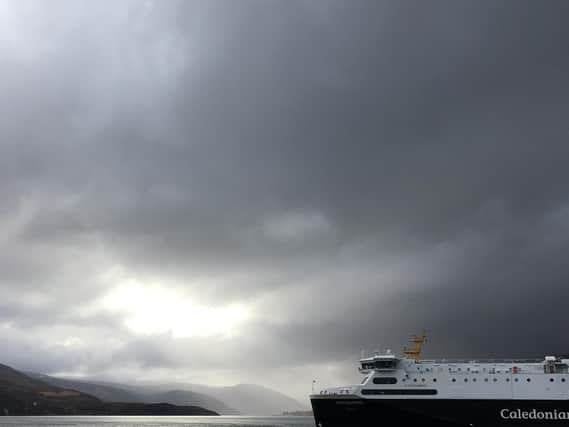Wind power generated in Outer Hebrides could 'power ferry services to islands'


Wind power could be used to make green hydrogen that would replace emission-heavy marine oil on established Caledonian MacBrayne routes.
It could open up a new homegrown market for island renewables, which have struggled in the past to keep good connections to the grid.
Advertisement
Hide AdAdvertisement
Hide AdThe findings have been broadly welcomed with claims the economic and environmental benefits of such a scheme "cannot be overstated".
The study is the first of its kind to look at how wind farms could be built specifically to power shipping on existing ferry services.
Likely locations of new windfarms as well as how to transport and store hydrogen for a new generation of ferries were among issues looked at in the report, which was partly funded by the Scottish Government.
Nine routes currently were operated by Caledonian MacBrayne were studied.
It found that a single 4.3MW wind turbine would be capable of supplying the required energy for the Barra to Eriskay Route.
Meanwhile, 15 turbines would be required on the Isle of Lewis to power crossinge between Stornoway and Ullapool.
The potential emissions savings from the replacement of the Barra to Eriskay and Stornoway to Ullapool routes with hydrogen vessels is estimated to be around 676 and 21,815 tonnes of carbon dioxide equivalent per annum respectively - roughly the same as taking 147 and 4,742 cars off the road each year.
Advertisement
Hide AdAdvertisement
Hide AdThe price of hydrogen that could be sold to ferry operators was calculated to range between £3.70 and £5.60 per kilogram.
This would equate to between £0.11 and £0.17 per kilowatt-hour as compared to the current marine diesel fuel of £0.05 per kilowatt-hour.
However, if hydrogen produced from renewable resources for marine transport was to be included in the UK government’s Renewable Transport Fuel Obligation mechanism, it was calculated that the price would fall to between £2.90 and £4.00 per kilogram (£0.09 and £0.12 per kWh).
The report has been published by Lewis-based Point and Sandwick Trust, which is in charge of the UK's largest community owned wind farm, in collaboration with a number of industry partners including Wood, Siemens-Gamesa, Johnston Carmichael and Ferguson Marine.
Project Manager Calum MacDonald, of Point and Sandwick Trust, said: “This is an exciting first step towards a future where zero-emission ferries are serving the Western Isles using hydrogen sourced from local and renewable wind power.
"We need to make our ferries zero-carbon to protect the planet but at the same time we need to use our local, renewable resources to fuel those ferries to protect and strengthen our communities.
"When we have the best renewable resources in Europe on these islands, it would be crazy to replace the import of marine oil with the import of hydrogen. By sourcing the power locally we can create a virtuous and sustainable cycle that benefits both the nation and local communities.
The most exciting finding of the study is that the price gap between using imported oil and local renewables is smaller than many would have expected.
Advertisement
Hide AdAdvertisement
Hide Ad"To close that gap even more we need further progress in the economics of wind farm and hydrogen production, we need to see the climate consequences of marine oil reflected in its pricing and, of course, we need progress in the design and manufacture of ships to make them more energy-efficient.
I have no doubt that we will continue to see rapid progress being made in these areas and, as they happen, it is essential that local communities are supported and motivated to take advantage of the new hydrogen economy.”
Euan Scott, Project Manager at Coimhearsnachd Bharraidh agus Bhatarsaidh (Barra & Vatersay Community) Ltd, welcomed the report as a “significant first step in challenging the status quo”.
He said: “The Western Isles has an established community renewable sector that has to date not been able to capitalise fully from the wealth of renewable resources on its doorstep.
"Grid export is severely constrained and new renewable assets must be associated with new demand. Juxtapose this to the Western Isles having far higher rates of fuel poverty than most urban or suburban areas in Scotland, with up to 58 per cent of households struggling to keep their homes warm.
“Yes there will be challenges ahead in terms of making the unit cost of production competitive but where better to do it than at point of consumption and against a target of net zero emission. Islands make natural laboratories because they’ve got relatively simple networks and infrastructure and if you trial new technology in the islands then it’s scaleable.”
He added: “The potential direct and indirect economic benefit to wider local community cannot be overstated. Once established in the local energy economy, other applications and uses for hydrogen will emerge."